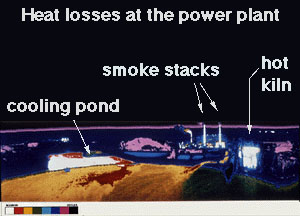Exploratour - Life in the Solar System
Click on image for full size
Image courtesy of Corel Photography
The reverse of this process, used by heterotrophs (other-feeders) coverts sugars and oxygen into biological energy. Carbon dioxide and water are produced as waste products.
Respiration, unlike photosynthesis, takes advantage of a natural tendency of oxygen to combine with other molecules. Oxygen is very reactive, and when combining with other substances tends to release large amounts of energy. Thus life forms which employ the process of respiration to run their metabolisms are taking advantage of the most chemically efficient and energetic pathway nature provides to produce bioenergy on Earth.
Certain forms of bacteria can covert energy by breaking down exotic molecules without the benefit of photosnythesis or respiration, however. An example is the coversion of acetate to methane by Archaea. Likewise, life elsewhere in the solar system may rely on energy conversion processes yet to be discovered by human science. One way to search for life is to try and detect the waste products from life's activity. Read more about NASA's current attempts to search for life in the Exploratour on NASA's Exploration for Life at the bottom of this page.
This is page 3 of 20












